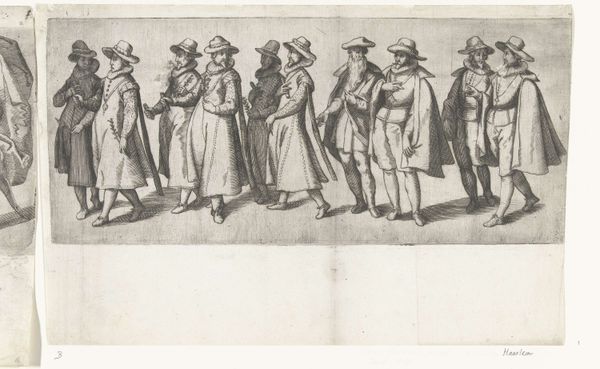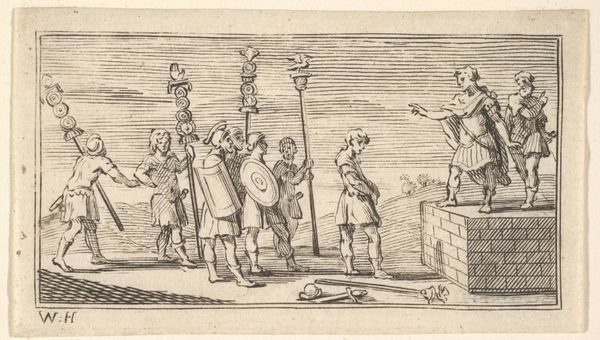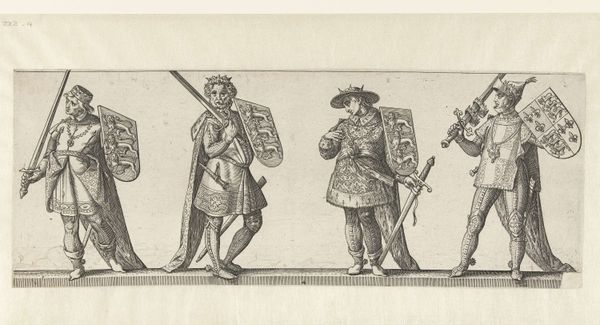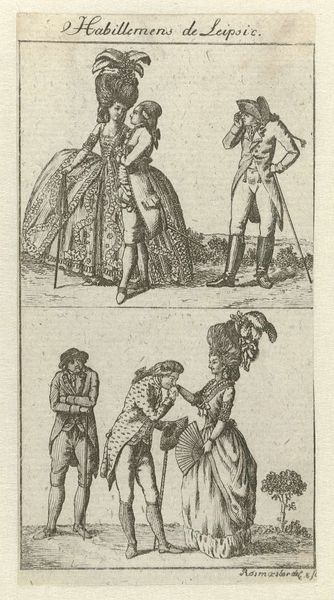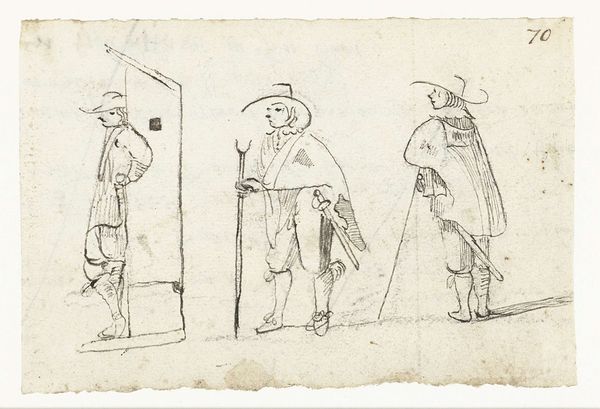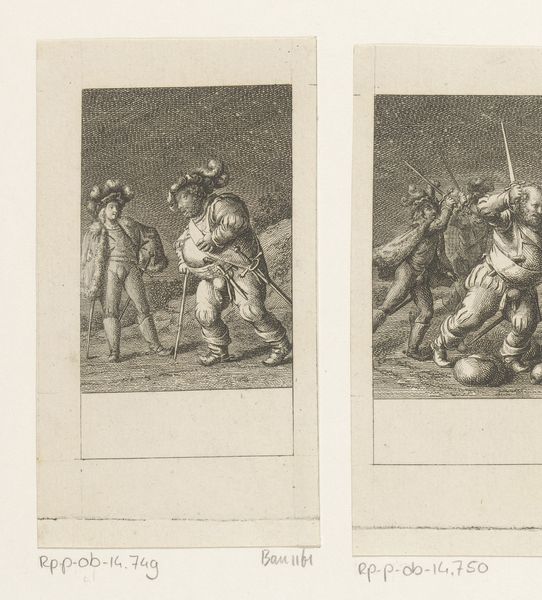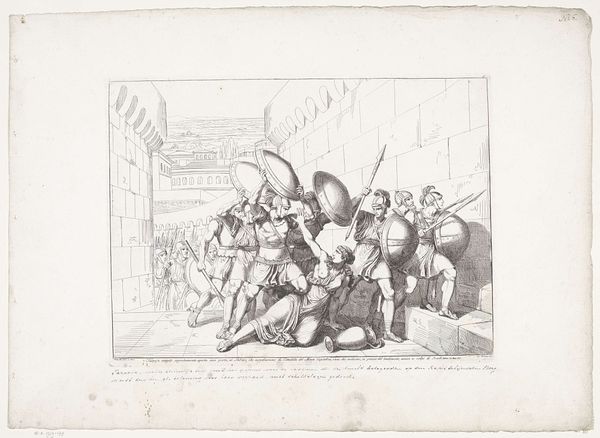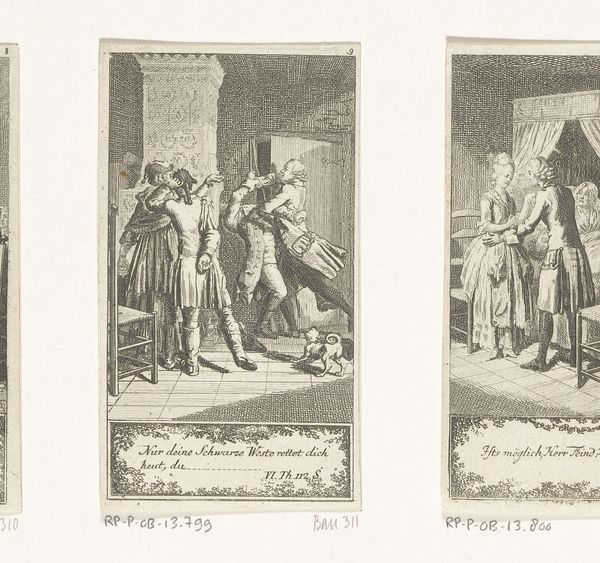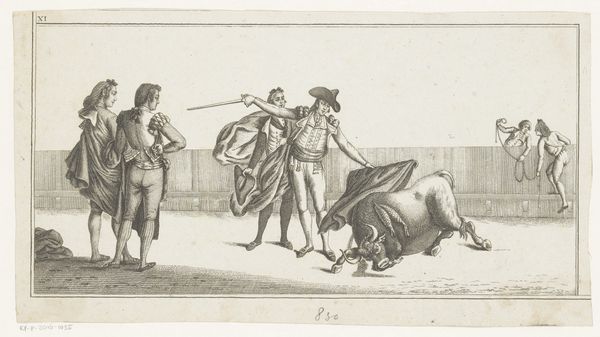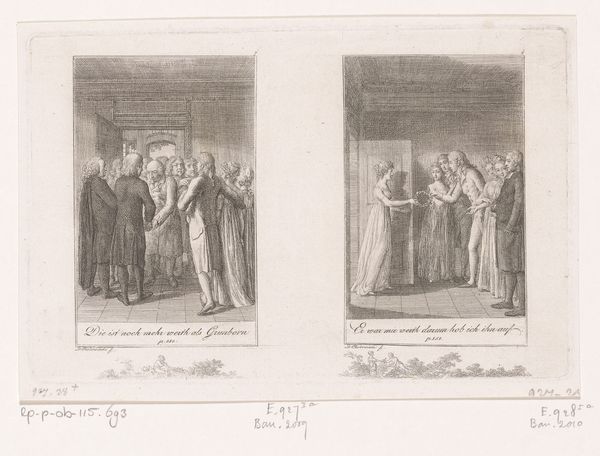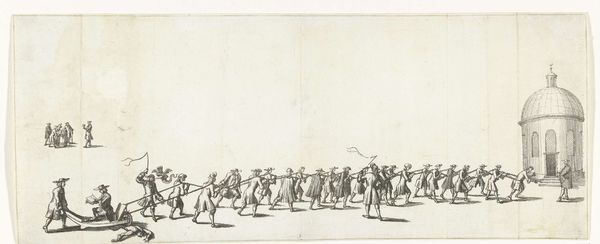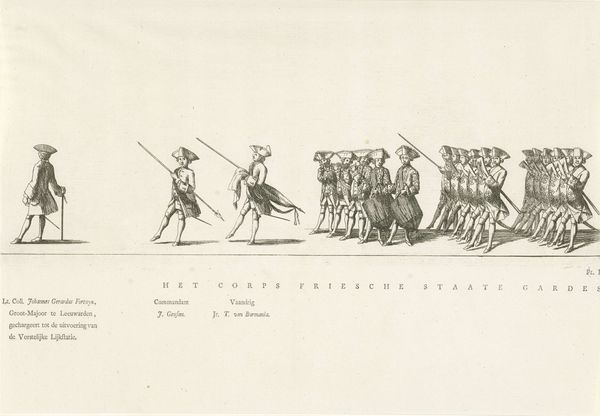
drawing, pencil
#
drawing
#
light pencil work
#
dutch-golden-age
#
pencil sketch
#
pencil
#
cityscape
#
history-painting
Dimensions: height 75 mm, width 584 mm
Copyright: Rijks Museum: Open Domain
Editor: This delicate pencil drawing, titled *Rijtoer van Willem III door Amsterdam, 1659*, depicts William III’s procession through Amsterdam. The anonymous artist really captures the atmosphere of a formal civic event. How should we understand this event today, with the historical distance we now have? Curator: It's crucial to view this procession through the lens of 17th-century Dutch society. William III’s ride represents not just a ceremonial occasion, but a powerful display of patriarchal authority. The drawing subtly reinforces the social hierarchy of the time, reflecting a very male-dominated society, wouldn't you agree? Editor: Absolutely, you see William as a symbol for male-dominated hierarchies. The artist is highlighting it through composition. I suppose it does give that impression but isn't there some focus on William's youth? Curator: The artist’s choice to focus on the young William might also be read as an attempt to legitimize his power and rule, right? Consider the absence of women in positions of power within the depicted event and Dutch society, and how that silence speaks volumes about gender roles and societal expectations. Who is represented? Who is not represented? Why? Editor: That makes me think about it more deeply in the way people viewed William back then and what their gender expectations were in Dutch society at the time. I didn’t think I would go there initially! Curator: Precisely. And by examining these historical works through an intersectional lens, we can begin to uncover the nuanced ways power structures manifested in the past and still resonate today. Editor: It's amazing how much historical context can influence how we interpret a simple drawing like this!
Comments
No comments
Be the first to comment and join the conversation on the ultimate creative platform.
